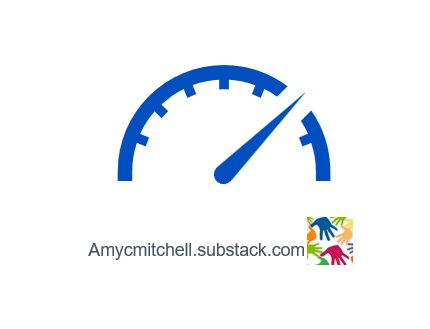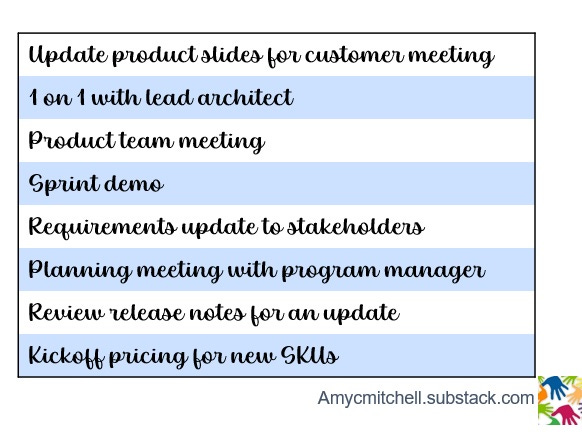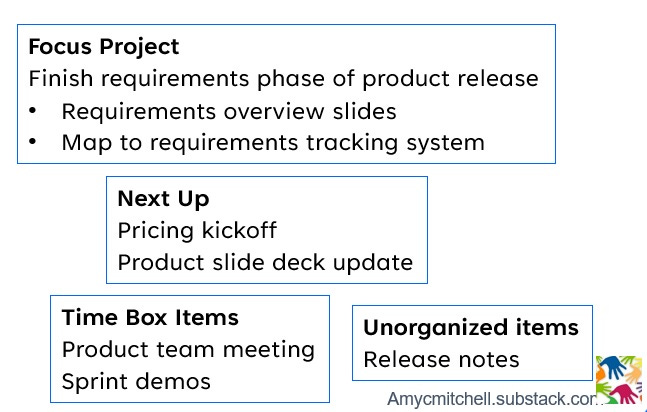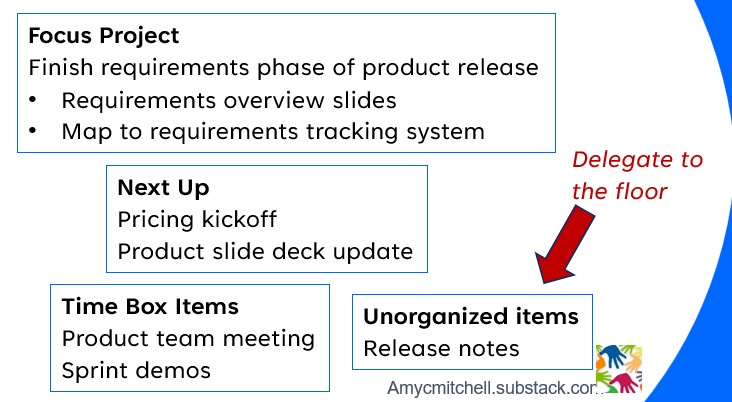Handling Overload Productively
Delegating to the floor and other techniques to tame the overload
Is it normal for product managers to feel overloaded? Yes! The best parts of product management can create overwhelming action items. For example:
Changes in your product environment leading to frequent re-planning
Decision freedom in a flat organization
Like most product managers, you enjoy these challenges. Though sometimes you can be carrying a big burden of decisions and action items. As the overload builds, your innovation slows and you hesitate to initiate change in your product.
Notice Your Overload Signals
Some of the signs of being overloaded are:
Overlapping meetings on your calendar
Gyrating on tasks without finishing
Getting IMs asking if you saw the email yesterday
Your notes are not organized for a week or more
You cancel 1 on 1 meetings at the last minute
When you have several days of these signals, it is time to take a breather and re-organize your key objectives.
Organize Your Short-Term Goals for Now
When you see the overload signals, you have more freedom than normal to pick your goals because these decisions can be reversed easily. There are 2 strategies to use when you do this re-goaling:
Clump all of your outstanding items around 4-6 keystone themes
Put priority on the items that align with your career goals
During your re-goaling, you likely will find some unrelated items that don't fit your keystone themes or your career goals. Note these items separately for later handling.
Below is an example of a SaaS product manager's short-term goals before organizing.
This list of short-term goals is pretty overwhelming and draws on several product manager skill sets. After clumping the goals around key themes and product manager goals, the updated list looks like below.
After the re-do of the short-term goals, we see this:
A content piece on the requirements overview that can be used for
the meeting with the architect
update to stakeholders
illustrations in the requirements tracking system (i.e. Jira)
A plan to get to items for the next product phase
Pricing kickoff
Product slide deck updates
Timebox items for group collaboration on key topics (product team meeting and sprint demos)
Unorganized items that don't fit short-term goals or your career goals
You need to finish #1 before working on #2. #3 is important for relationship building and product leadership communications - limit this to 2-3 hours a week. #4 has separate handling once you get on track with #1, #2, and #3.
Taming the Overload by Delegating to the Floor
After you get your short-term goals in order, you still have a few open items to clear. Don't leave these items on your goal list! Delegating to the floor means you don't do the goal. This came from the Managers Tools Podcast. There are a few steps to delegate to the floor:
Determine who is impacted by not doing the goal
Have a workaround in mind
Understand how other team members’ priorities are affected
Let your manager know of your decision if you need air cover
Based on your agreed priorities you do not plan to tackle the goal
possible issues from delegating to the floor
Communicate about your decision, if others are waiting for you
Looking at the example, we see there is one goal that isn't clumped with other goals. This is the item to delegate to the floor.
Reviewing release notes is very important for product managers. Since this is an update and you discussed the changes with the architect, there is a low risk of skipping the review. You inform the documentation team that you have no comments on the release notes.
Is there a risk that a typo or conflicting information goes out to your customers? Yes. However, the risk of bad requirements is a far more costly issue.
Conclusion - Handling Overload Productively
Product leaders at all levels are transparent about their goals and priorities. When you need to be in two places at the same time, then this is a signal of being overloaded that you can't ignore. When you see overload signals, it is time to organize and group your goals to fit your priorities.
When you find goals that don't fit your priorities, then delegate them to the floor.
Interesting Links
How to do Journaling Capturing notes and clearing your mind with journaling. Templates, examples, and tips to get started from @Nicola Ballotta in his weekly leadership newsletter.
Managing Your Stakeholders & More Focus on goals, finding the decision maker, and knowing when to escalate are some of the tips from @George Nurijanian in his weekly product management newsletter.






Yes! A PM need not only manage the product's priorities, but also their own priorities. Thanks for the input, Amy.
My personal way of dealing with "request overflow" is a combination of Eisenhower, GTD and LNO: https://www.leadinginproduct.com/p/how-to-manage-tasks-as-a-product but I really like the notion of themes.
Great advice. I find I deal with being overwhelmed very well as long as all the outstanding actions/projects are on me. When too many outstanding actions/projects heavily rely on external individuals (particularly higher-ups), it gets frustrating.
I follow a similar system to yours. I create a Project in Todoist and keep track of the long-term ‘stuff’ in there. On a day-to-day, I timebox my work. I found doing that on paper works best. I write my timeline on the right page of a notebook and I write my top priority for the day on the left page.
For some reason, it works!